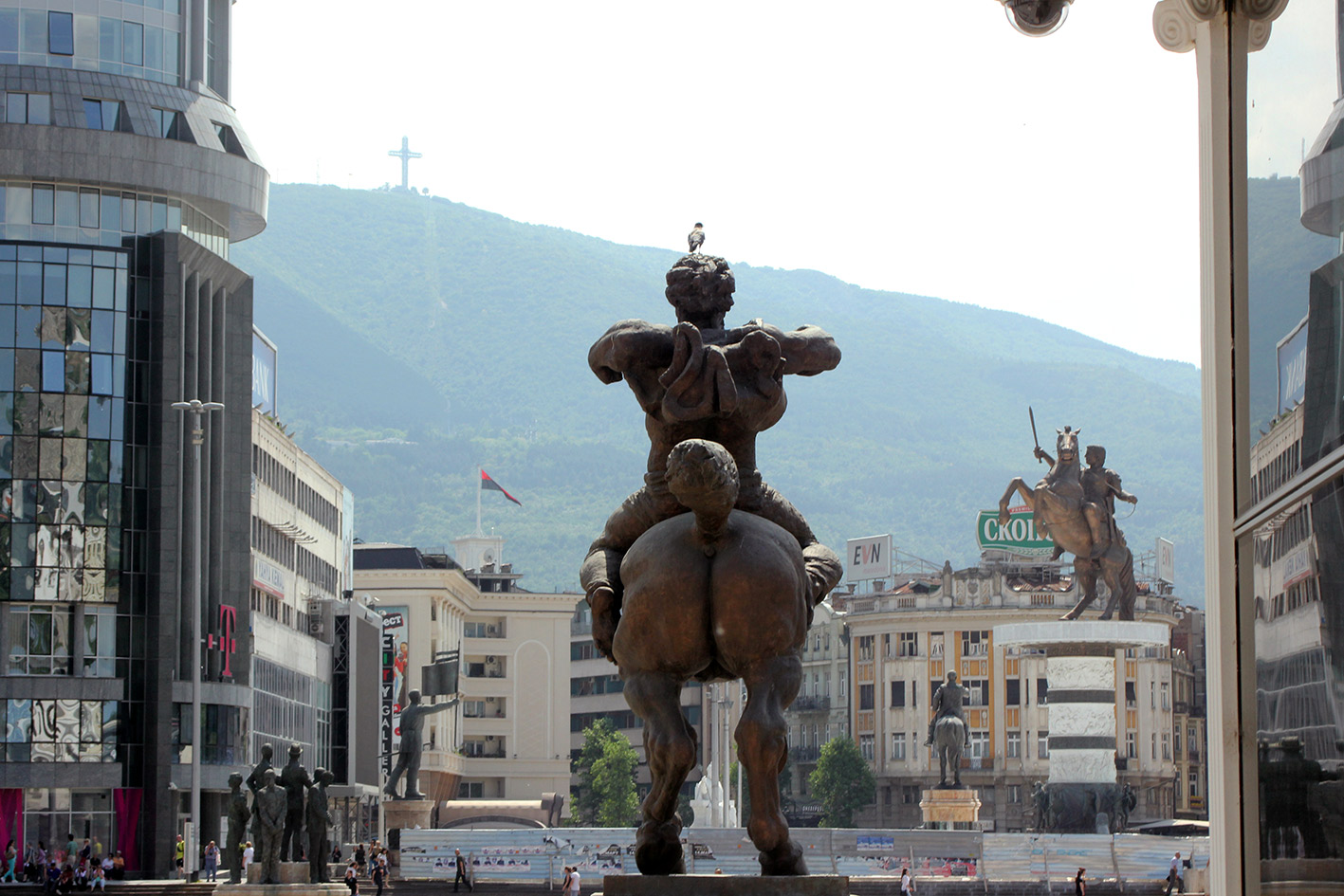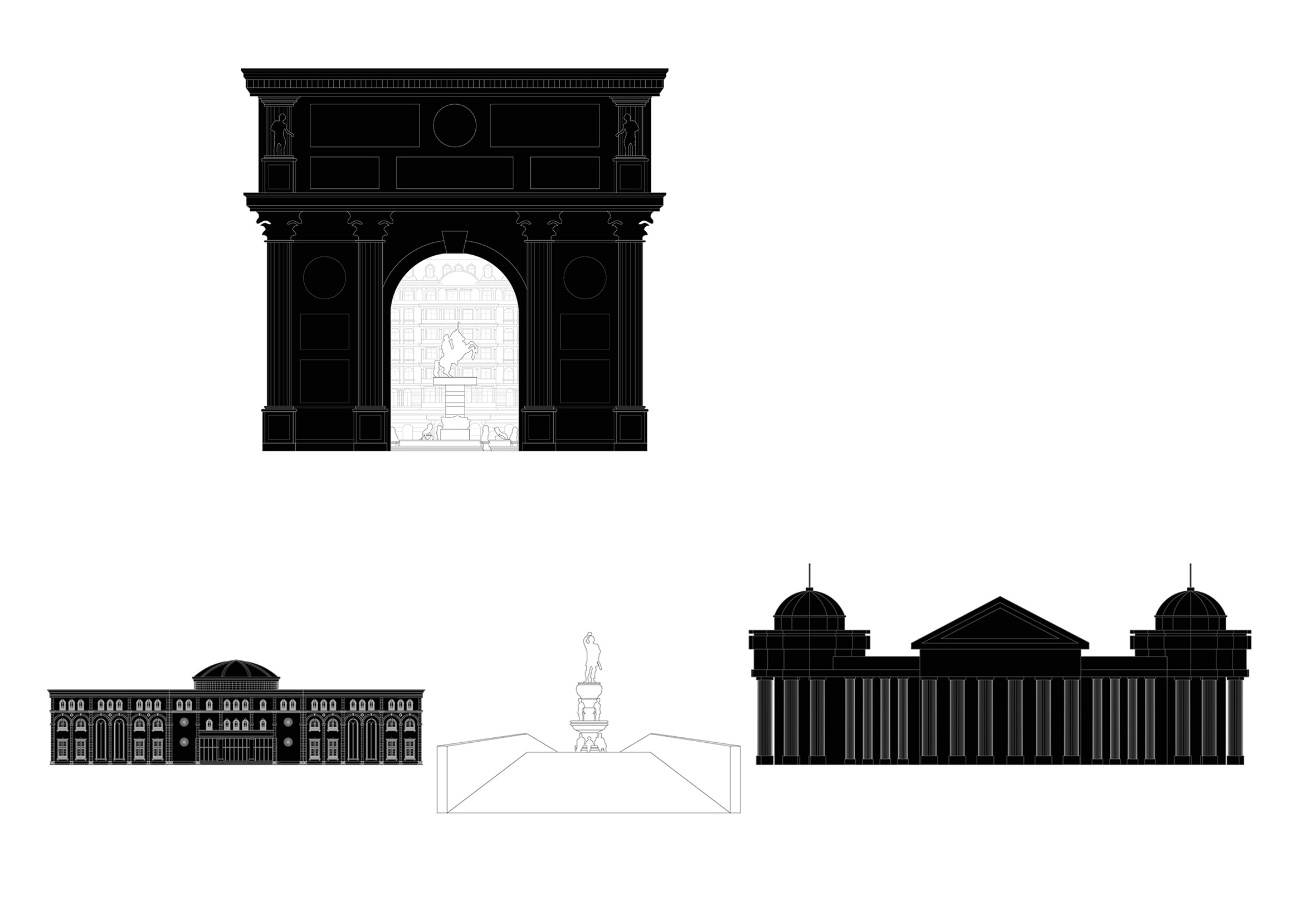
Framing architecture, as a tactic for (de)constructing the city’s architectural memories, is also one of the methods used by the Skopje2014 project to achieve its main strategic goal. This tactic does not directly modify the existing architecture, but it is a logistics tool that deals with strategic placement and characteristic sight-lines. It is a tactic that provides a new attitude and identity for the city, by creating postcard images on particular positions in the center that promote the newly constructed Skopje.
This new architecture is being produced for the specific purpose of forgetting a certain time in the past and rearranging the course of history, so therefor, the new architecture is inventing a new past (as explained with the previous tactic invent). Even though it is the newest architectural layer of the city, it appears much older than the one it is trying to take the focus off. By layering the new monuments, landmarks and buildings in a way that they enhance each other’s presence, the new architecture is becoming visually more and more available, taking all the attention and becoming the leading (hi)story teller.
Through the Skopje2014 project in the last couple of years, a lot of new monuments have appeared in the center of the city. They have populated it in a way that there is a monument to be seen at the end of every sight-line. The new old architecture is then positioned in a way that it frames a monument and creates the postcard. The monument is being framed and the architecture is the frame.
In the first example, the frame is the triumph arc Porta Makedonija, built in 2012 looking like the Parisian one from 1836 (tactic borrow), thus the frame being new old architecture. This frame is positioned in a way that, when one stands or drives along the boulevard in front of the Assembly building, the triumph arc perfectly frames the new monument on the main city square, thus a new monument at the end of a characteristic sight-line. Behind this monument a new hotel is being built in a classical style. This would be the third layer in this postcard image, the background in a style promoting the newly constructed history.
In the second example, the chosen sight-line is one of the main characteristic visual axis of Skopje. It is the view a pedestrian has while passing the stone bridge, which connects the main city square with the old bazaar district. Centrally positioned, on the other side of the bridge, there is a new monument which is being framed by two new buildings, placed on both sides of the end of the bridge. On the left side there is the Museum of the Macedonian Struggle, built in 2011 in a “baroque” style. On the right side is the Archaeological museum, built in 2014 in a classical style.
If the results from the frame tactic are postcards, who are they for? The citizens know the age of the landmarks and the buildings and find no sentimental value in them. The landmarks and buildings are new and therefor unfamiliar and foreign.
The visitors on the other hand, are just passing by.
To whom does this new city belong?

Framed View
Founitain / Monument Warrior on a horse,
Valentina Stefanovska, 2011.
Frame
Triumph Arc Porta Macedonia,
Valentina Stefanovska, 2012.
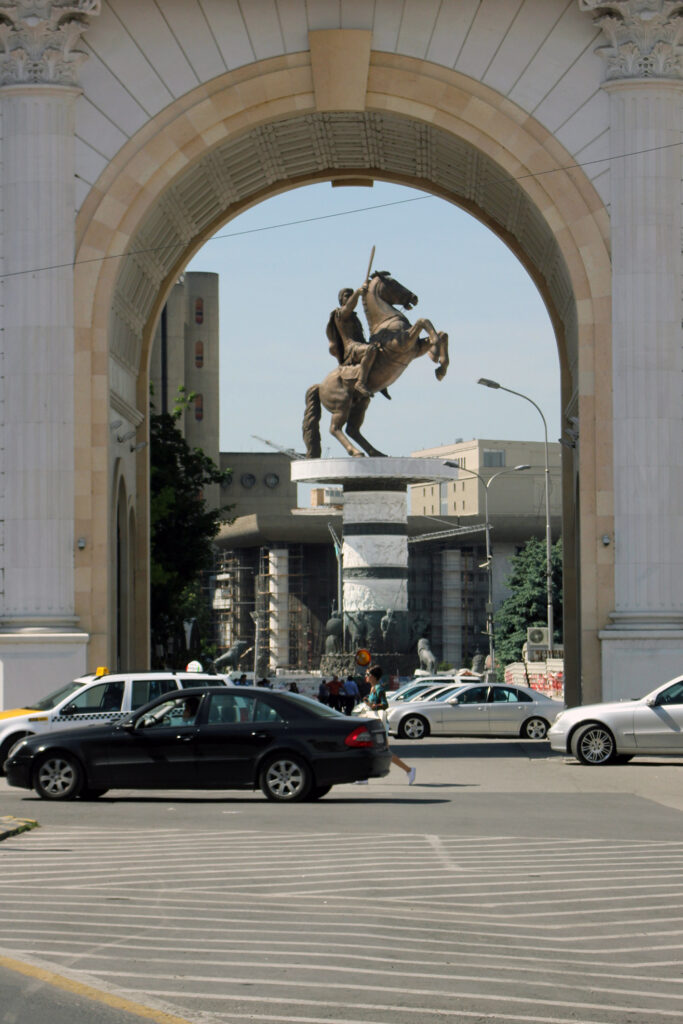
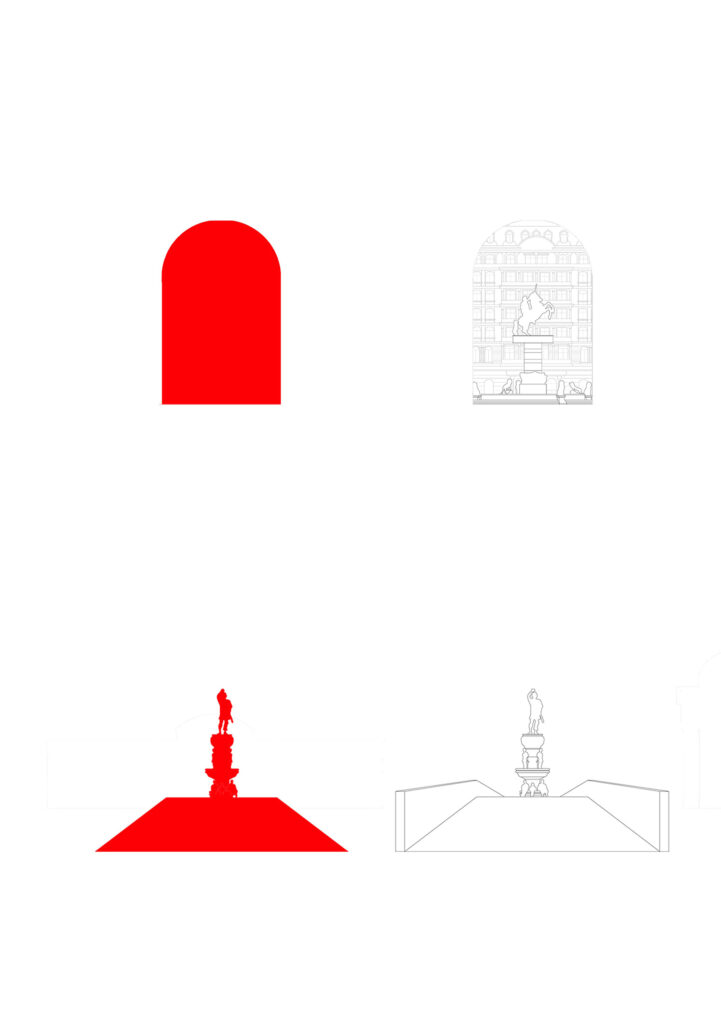
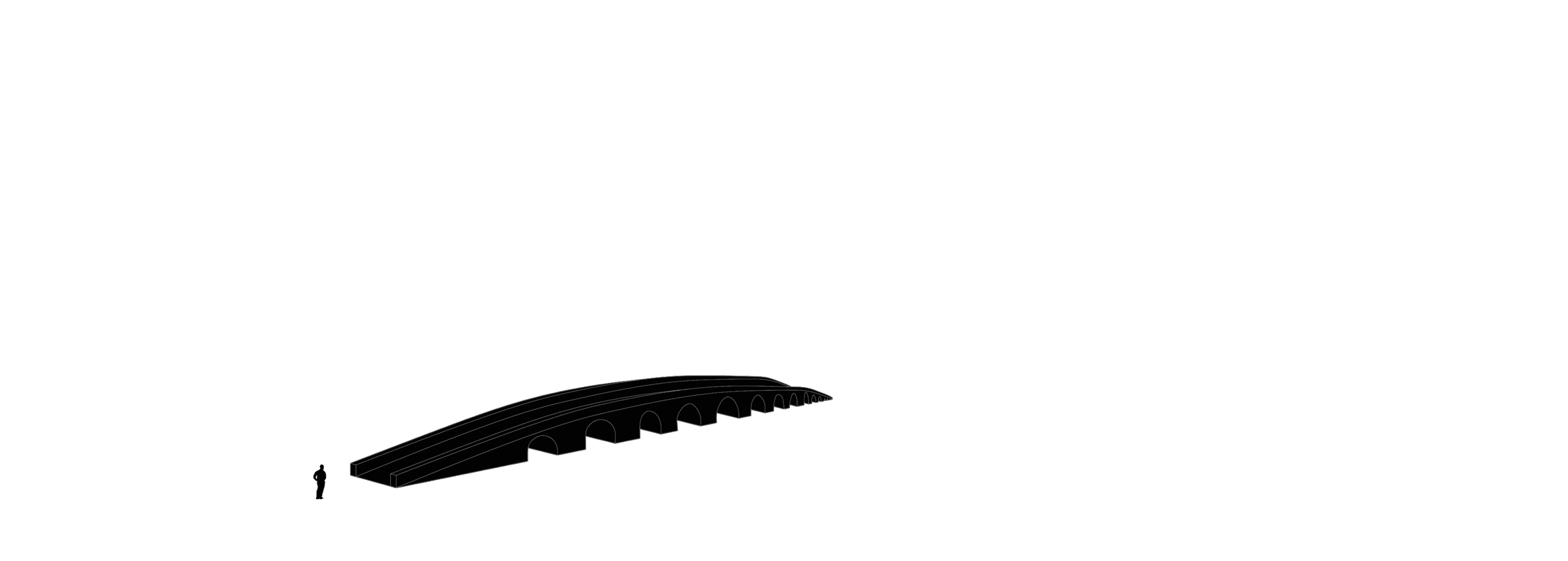
Framed View
Founitain / Monument Warrior,
Valentina Stefanovska, 2013.
Frame
The Museum of the Macedonian Struggle for Sovereignty and Independence / Museum of VMRO / Museum of the Victims of the Communist Regime,
Zoran Jordanovski, 2011.
Archeological Museum / State Archives / Constitutional Court,
Slobodan Zhivkovski, 2014.
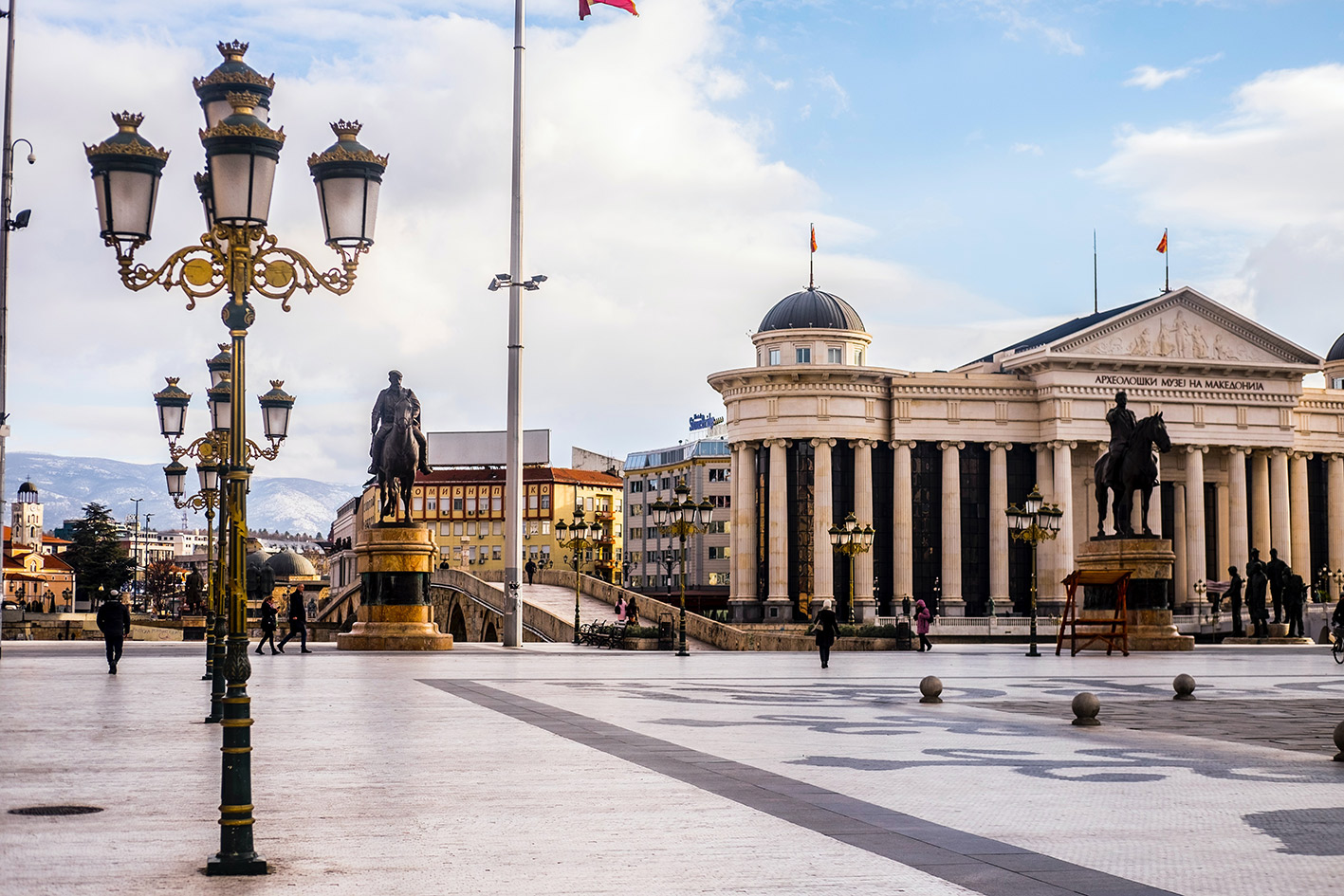
Photo by Tamas Marton
